Spider plants (Chlorophytum comosum) are, also known as spider ivy and ribbon plant, are the most popular indoor plants. Ribbon ivy produces long, narrow, and arching leaves. In addition, it has light to dark green leaves with a satiny appearance while the margins are white. The other common name of spider plant includes Airplane Plant and St. Bernard’s Lily. In this article, let’s discuss about spider plant brown tips.
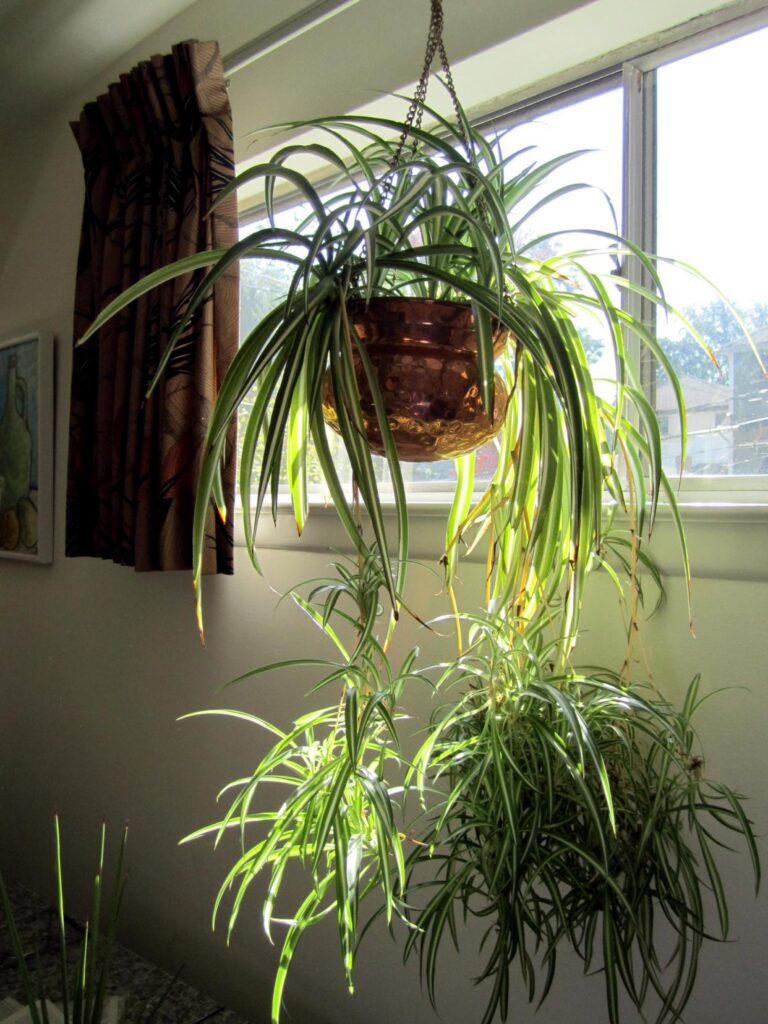
These spider plants are tropical perennials and thrive stunningly in warm temperatures and humid air. However, the spider ivy is only sensitive to higher light intensities. For example, when ribbon ivy is grown in higher weak powers, they produce medium to dark green leaves with white to yellow stripes at the margins. And the higher light exposure may cause the brown leaf tips on spider plants.
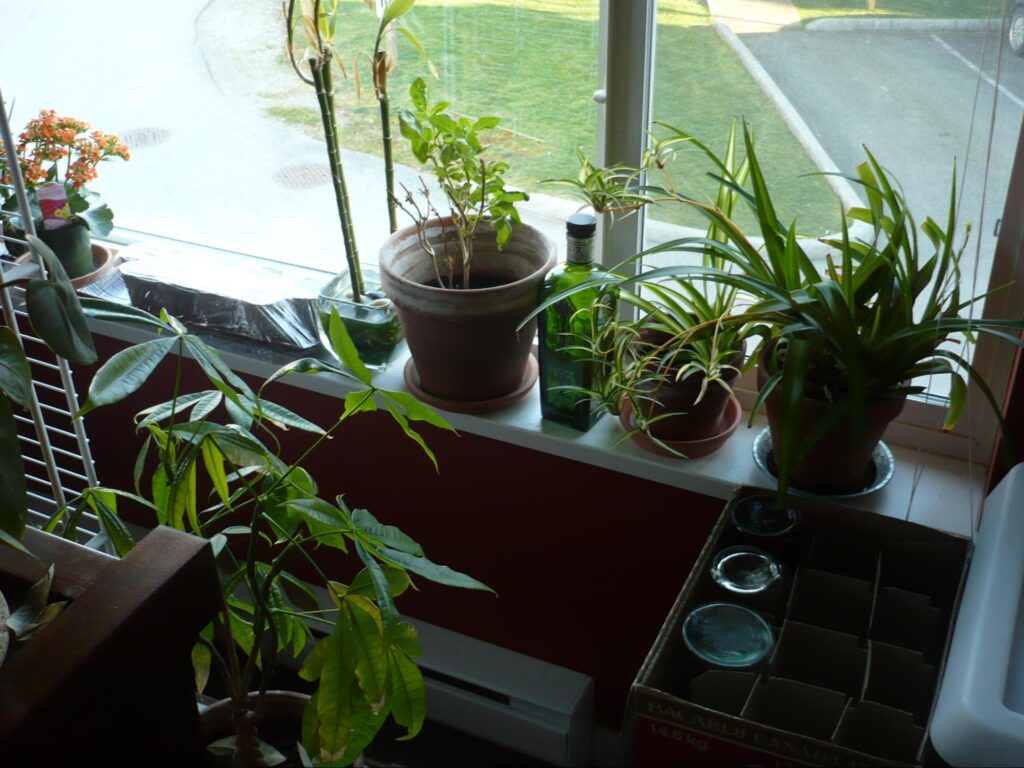
On the other hand, when spider plants are grown under low light intensities, they produce drooping leaves without their unique arch.

Even the flower production of spider plants also relies on optimum lighting conditions. Mature plants produce small star-shaped flowers. After full blooming, small flowers fall off the ground, and tiny plantlets or spiders emerge from these flowers, growing their roots and turning into a new spider plant.

Spider plants are easy to maintain in indoor and outdoor environments because they do not need extreme care. These spider ivy can also be planted at any season with the right fertilizer, water, and light conditions. One care tip for the spider plant is not to expose them to frost.
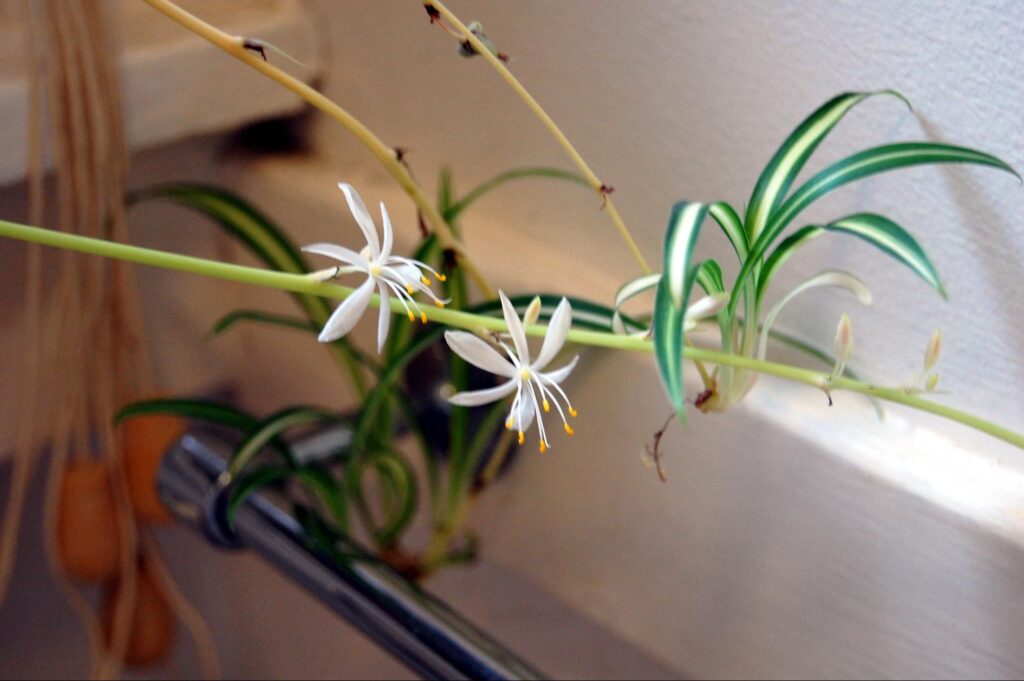
What are the Nutritional Requirements for Spider Plants?
Spider plants are one of the easiest foliage plants that are easy to grow and maintain because they do not require much care. These plants can tolerate changes in potting mix, fertilization, and nutrients except lighting duration. Under changing growth conditions, they do not show any changes in quality.
These plants are not susceptible to severe pest attacks, plant diseases, and mite problems. However, fertilizer applications play a vital role in the quality of spider plant foliage. And a fertilizer ratio of 3-1-2 for nitrogen, phosphorus, and potassium produces excellent quality foliage. Also, it does not cause brown tips on spider plants.
Note: Ensure the fertilizer source does not contain fluoride and boron content because they damage the spider plant foliage. At the same time, the fluoride toxicity sacrifices the quality of vegetation.
In the summertime, spider plants grow well in outdoor environments and need regular watering. They require water at least two times a day with an accurate fertilizer plan throughout their growing season.
With all care and optimum growth media, the spider plant has problems. However, these problems are not severe and can easily be removed.
RELATED: How To Propagate A Spider Plant: What You Need To Know
What are the Common Problems of Spider Plants?
The most common and confusing problem with ribbon plants is the brown tips of spider plant leaves. And the second less common problem is pests such as whiteflies and aphids. But these two pests can be managed through a natural way that is rinsing with water.
This write-up will discuss the true causes and solutions for spider plant brown tips or brown leaf tips.
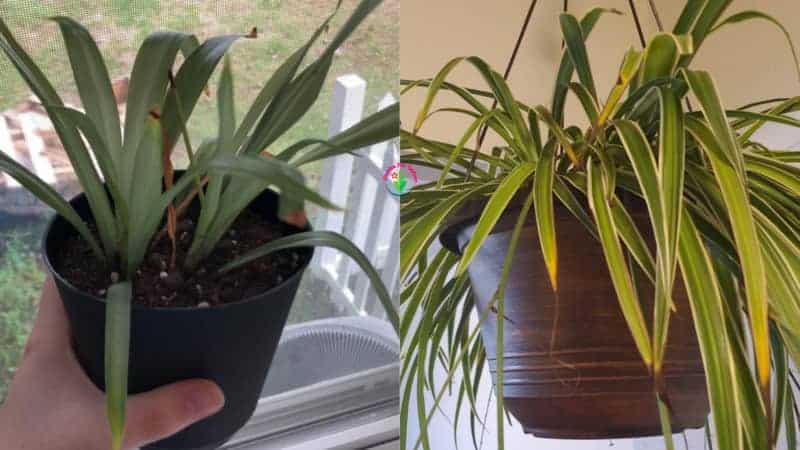
What are the Common Causes of Spider Plant Brown Leaf Tips?
Spider plant is a foliage houseplant that can tolerate and survive in any kind of conditions such as indirect light and improper temperature. In mild optimum conditions, spider plants produce flowers and spiderlings. However, there are some factors to which spider plants are sensitive, and their leaf tips turn brown, black, dead, and filthy. And these brown tips resemble bacterial leaf blight and impact the quality of spider plant leaves.
Once spider plants’ leaf tips turn brown, you can not recover the plants from damage. But the only thing you can do is prune off the brown leaf tips on spider plants with sharp scissors.
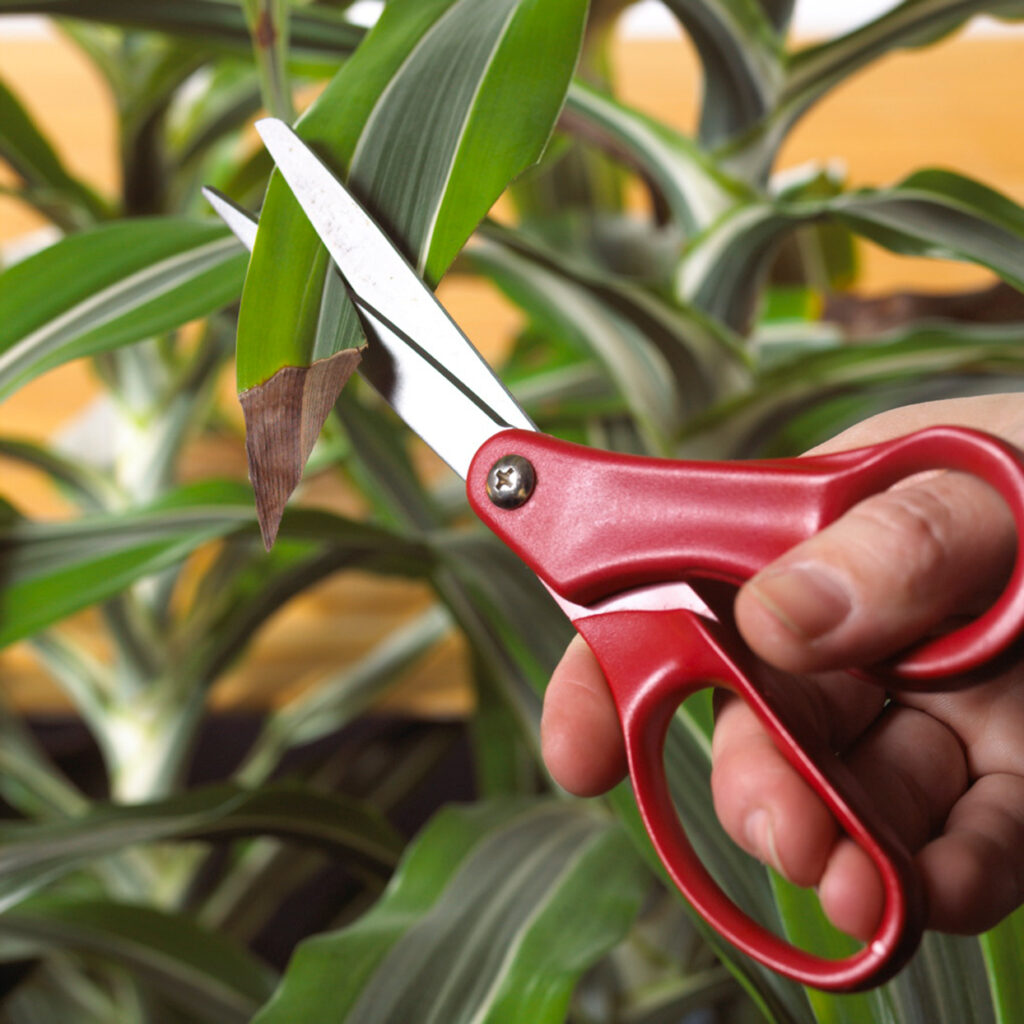
The browning tips on spider plants are due to:
- Water stress such as overwatering and underwatering
- High fluoride content in tap water
- Excess fertilizer
- Soil stress such as dry soil and wet
- Brown tips of spider plant leave due to fertilizer burn or salts in the soil
- Too much sunlight
- Browning of spider plant’s leaf tips due to pest attack
Brown Tips of Spider Plant Due to Water Stress
The first and most important cause of brown tips on spider plant leaves is water stress, either overwatering or underwatering. The excessive watering of spider plants leads to soggy soil. In this soil, indoor plants cannot take oxygen and water from the soil and develop root rot. Spider plant leaves turn brown tips due to excessive water toxicity in this stage.
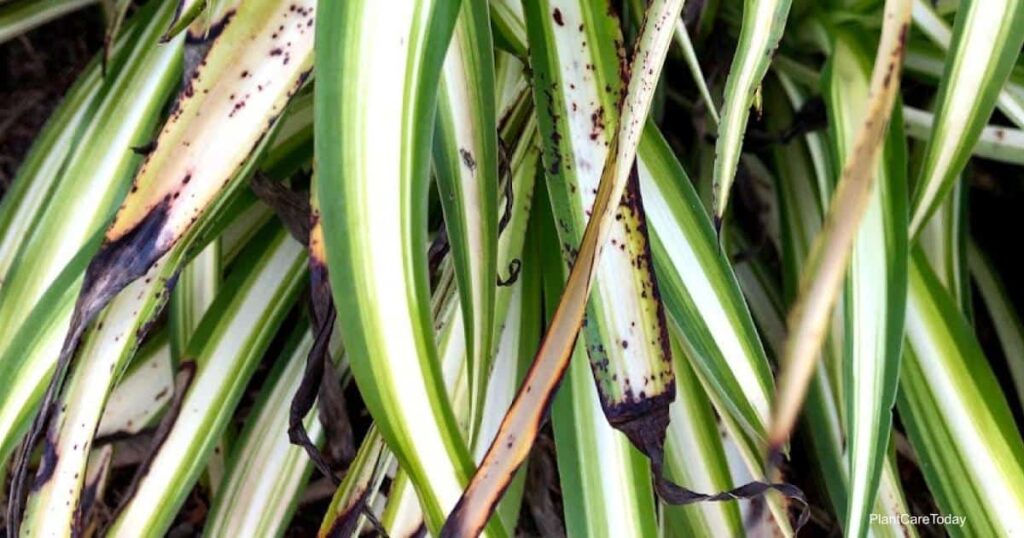
To prevent the spider plant from root rot and brown tips, simply pull off the plant from the old container and repot it in a new pot with fresh soil. Also, cut off the damaged foliage through scissors. And the plant pots should have drainage holes to drain the excess water.
Moreover, water the spider plant regularly in moderation and ensure the top inch layer of potting soil is dry before every watering.
The second reason for the brown tips of spider plant leaves is underwatering. Allowing too much dry will cause browning of leaf tips because spider plants love slightly moist soil in warm weather and are somewhat dry in the winter season. Therefore, it is essential to maintain the soil moist moderately to prevent over-drying and browning leaves.
The proper way to maintain houseplants, especially spider plants, is to grow them in pots with drainage holes to draw out the excess water and keep the potting soil healthy (optimum moist levels with growth media).
RELATED: Leaves Turning Brown? Tips For Saving Your Spider Plant’s Tips
Too Much Fertilizer Applications
Sometimes, the spider plant’s brown tips resemble nutrient deficiency symptoms such as nitrogen. And we felt the need for fertilizer application in the form of nutrients. In such conditions, do not overfeed the spider plant with excess nutrients because it causes the build-up of nutrients in potting soil and ultimately fertilizer burn.

The fertilizer burn in the spider plant also causes root rot which influences nutrient absorption. As a result, spider plant foliage develops brown tips and looks starved. The best solution to avoid fertilizer burn is flushing the soil with distilled water or rainwater to draw out the excess nutrients.
In case of more damage, simply prune off the spider plant brown tips or re-
pot it in a new pot with fresh soil.
The houseplants do not need much fertilizer throughout their entire life. So to grow a stunningly healthy spider plant, apply fertilizer in late spring and early fall.
Fluoride & Boron Toxicity
Spider plants are sensitive to fluoride and boron contents in tap water. And the occurrence of these two compounds deters plant health. The fluoride toxicity will burn the spider plant leaves. It causes the browning tips at the top and along the margins of the spider plant.
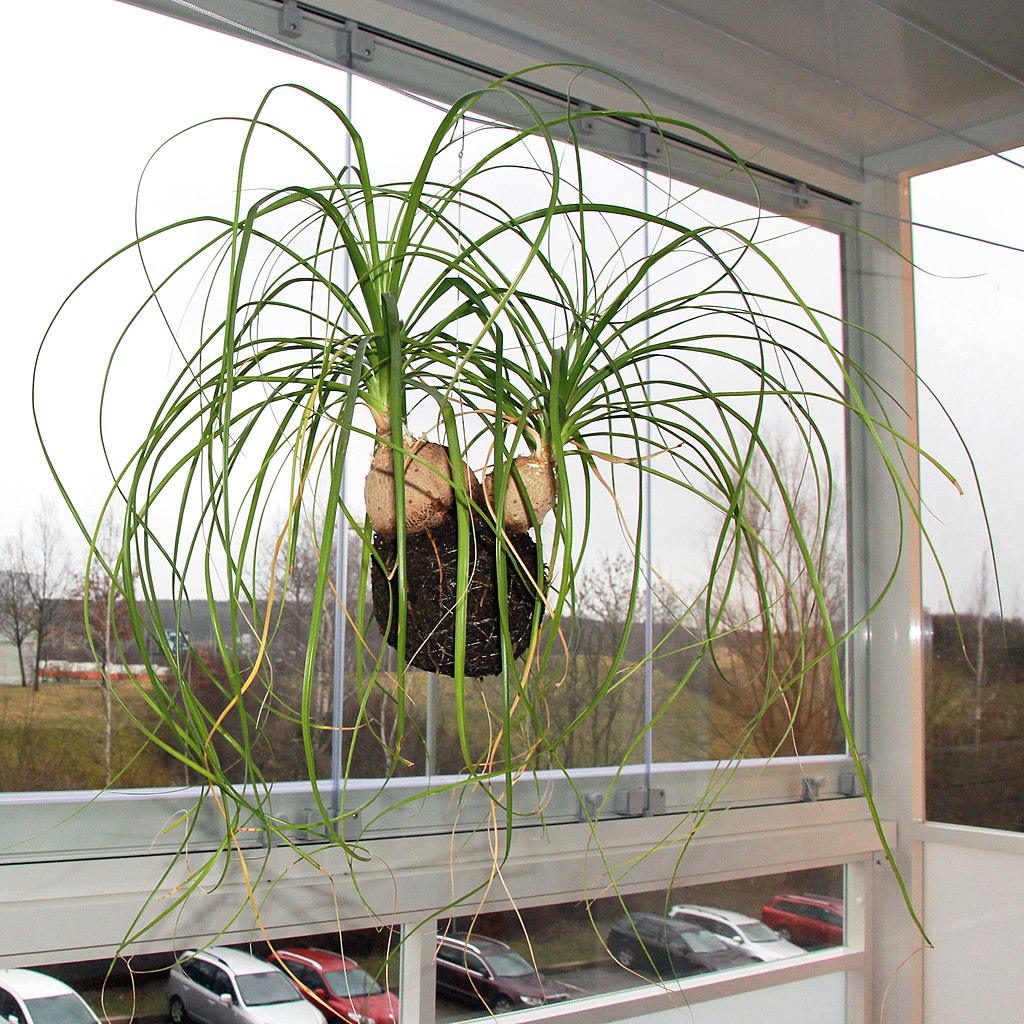
To prevent the toxicity of fluoride contents, do not use tap water for the watering process of spider plants. Instead, consider only using rain or distilled water for the spider plant.
If there is any build-up of fluoride in potting soil mix due to constant watering with tap water, then flush the soil with distilled water to leach out the fluoride contents.
Low Humidity Environments Causes Spider Plant Brown Leaf Tips
Many houseplants can tolerate and grow well in low humidity in indoor environments. But it is not the scenario for indoor spider plants. Because low humidity environments cause the leaf tip burn and spider plant’s leaves loss their cosmetic value.
To make the spider plant happy, try to maintain a humidity level of about forty to sixty percent in indoor environments. For this purpose, you can use a humidity tray and a running humidifier.
Direct Sunlight Will Burn Spider Plant Leaves
Spider plants are susceptible to light intensities. Therefore, direct sun exposure will damage the foliage (leaf browning). Not only this, it will completely dry out the potting soil mix. As a result, the dry soil will cause brown leaf tips.
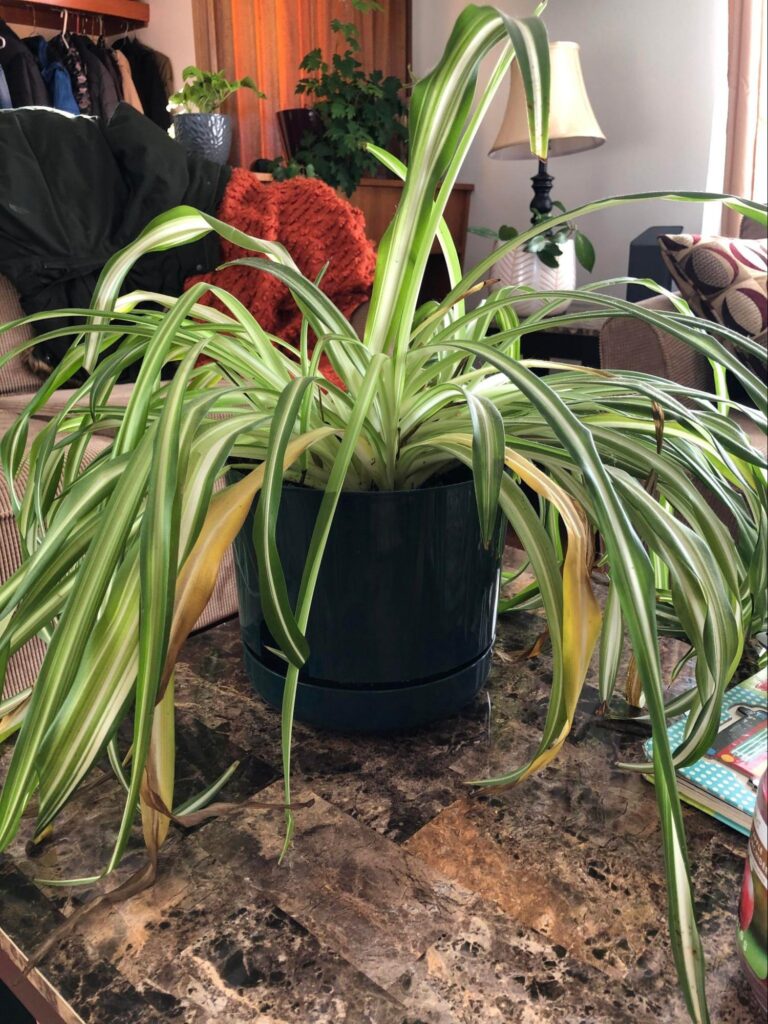
To discourage the burning of tips, position the plants in bright indirect light and sun and reduce the sun exposure of plants.
Frequently Asked Questions (FAQs)
Why Is My Spider Plant Getting Brown Tips?
The following are the reasons why your spider plant is turning brown:
- Wet soil or dry
- Too many fertilizer applications
- Too much sun exposure
- Low humidity in indoor environments
- Fertilizer and salt build-up
- Hight content of fluoride in free water
- Water stress or improper watering process which also causes brown spots
How Do I Know If My Spider Plant Has Root Rot?
Thes best approach to determine the spider plant’s root rot is the plant foliage color and health. If the plant foliage is brown at the tips and yellow along the margin, it indicates that your plant has root rot. It is due to overwatering, underwatering, wet soil, dry potting soil, salt burn, fertilizer buildup, and fluoride toxicity.
When the spider plant’s roots are rotten, most likely the plant is unable to absorb nutrients and water. And it may die due to nutrient and water starvation.
Why is My Spider Plant Turning Yellow and Brown?
It is because your spider ivy has a nutrient deficiency. The salt build-up and excess fertilizer accumulation at plant roots or potting mix make it difficult to absorb nutrients and water from the soil.
The only way to avoid the browning and yellowing of foliage is to fertilize the spider ivy with half the recommended strength in late spring and early fall only (growing season).
Do not water the ribbon plants with tap water; only use rainwater or distilled water because tap water has a higher content of fluoride that causes toxicity to plant leaves. In addition, the higher levels of fluoride block photosynthesis, thus turning the plant yellow and brown.
Can A Spider Plant Live Without Sunlight?
Spider plants can not survive in the absence of natural sunlight because they will not photosynthesize. The plant leaves will turn yellow due to chlorophyll breaking down and falling or losing their unique arch. Hence, optimum sunlight exposure is essential for the lush green growth of ribbon plants.
Should I Remove Brown Tips?
Yes, because once the leaf tips turn brown or the damage occurs. It is not possible to recover the plant foliage. So the best practice is to cut off the burned leaf parts with scissors. And then carefully examine the spider plant for care tips such as watering techniques, air circulation, humidity, light exposure, and fertilizer feeding.
Should I Bottom Water My Spider Plant?
Yes, the bottom water technique is suitable for spider plants, and this process can be repeated once a week. In this technique, potted plants are placed in a hollow tray filled with water to absorb the maximum amount of water to grow roots towards the bottom.
Sources For Further Reading
- Spider Plant Production Guide. (n.d.). The University of Florida. Retrieved March 5, 2022, from https://mrec.ifas.ufl.edu/foliage/folnotes/spider.htm
- R. (2021c, August 9). Spider Plant Brown Tips: 8 Most Common Causes w/ Fixes. Houseplant Care Tips. Retrieved March 5, 2022, from https://www.ohiotropics.com/2021/07/23/spider-plant-brown-tips/
- Buckner, H. (2022, February 23). How to Revive a Wilting Spider Plant. Gardener’s Path. Retrieved March 5, 2022, from https://gardenerspath.com/plants/houseplants/revive-wilting-spider-plant/
After learning about spider plant brown tips, also read our other houseplant care tips:
All About Worm Castings and Their Benefits to Plants & Soil!
10+ Natural Pest Control for Houseplants to Protect Them from Insects and Diseases







